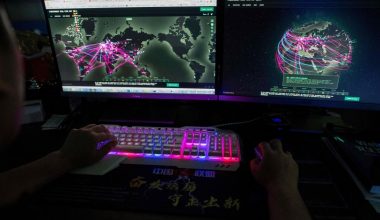A recent research from a US think tank led by former Google CEO Eric Schmidt raises concerns about China’s ability to dominate the technology sector and, in doing so, to seriously harm the US economy and military.
The paper, titled “ Mid-Decade Challenges to National Competitiveness (Opens in a new window) ,” was created over the course of ten months by the Special Competitive Studies Project (SCSP) (Opens in a new window) think tank (Oct. 2021 to Aug. 2022). Four board meetings and 26 panel discussions with more than 225 specialists, including “government officials, technologists, and academic leaders,” took place throughout that time. The conclusions are sobering, claiming that between now and 2030, microelectronics, artificial intelligence, and 5G will “shape technology” for the US.
These three technological fields, according to the report, “convey the story of a nation (and its allies) moving precariously and unwittingly close to relinquishing the strategic technology landscape and with with it the potential to create the future.” Because of the reliance on them by the US economy, society, and national security, it is thought to be extremely perilous for China to become a dominant force in these fields.
This new research contributes to making it crystal obvious why the US administration is adopting a much tougher stance toward China and its access to cutting-edge technology this year.
What Does Losing Look Like? is covered in the section. The worst-case scenario appears to be one in which China seizes Taiwan and shuts off the US’s access to rare earth minerals. In this scenario, “Americans would be forced to live in a world where China can turn off the technology tap,” their military would be crippled, and the country would go into a deep depression.
What can be done to stop this from happening, then? According to the SCSP, 2025–2030 is the crucial time frame for China to successfully improve its military prowess while carrying out its “techno-economic plan.” By addressing the six issues listed in the report, which the US may do by:
EDITORS’ RECOMMENDATION
” alt=””>
Utilize innovation from the private, public, and academic sectors to gain a competitive edge in key technologies.
Bring back US production of technological gear with government support and investment.
Sort out AI governance while enabling technological advancements and their prompt application to enhance lifestyles and acquire an advantage in numerous sectors.
To keep the internet open, interoperable, and safe, increase your reliance on technology solutions and standards.
Adopt the “Offset-X” military doctrine, which emphasizes “distributed and networked operations, human-machine collaboration, human-machine teaming, supremacy in software-centric warfare, resilience, and better technological interoperability and interchangeability with friends and partners.”
By utilizing “dedicated, tech-driven, open source organization” and developing new capabilities for gathering foreign economic, financial, and technological intelligence, the US Intelligence Community can undergo a digital makeover.
The report’s conclusion reads as follows:
The United States faces a competition in China who is already shifting and positioned to dominate a similar slate of “deep tech” and “frontier tech” as the world approaches yet another disruptive technology age. Who will prevail in the twenty-first century will depend on whether the United States can rise to the challenge and seize the potential of the oncoming wave of breakthrough technology.
The Top VPN Services for 2022 (

) APPRECIATE WHAT YOU JUST READ? For direct delivery of our top privacy and security stories to your inbox, subscribe to the SecurityWatch newsletter.
Advertisements, discounts, and affiliate links could be found in this newsletter. You agree to our Terms of Use and Privacy Policy by subscribing to a newsletter. You are always free to unsubscribe from the newsletters.







